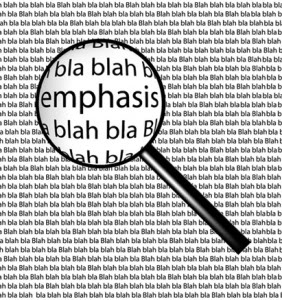“The focus on specific subsets of relevant aspects, highly influences our judgments”
In order to understand and make sense of the world around us, we constantly interpret the meaning of the things and events that we notice. We call this ‘framing’. For example, if you evaluate plans to encourage electrically powered bikes, you might interpret it as environmentally friendly when framed as a moped, but friendly when framed as a bike, and your response will be very different.
Emphasis framing is a persuasion technique where focus is placed on those specific aspects of a solution that encourage certain interpretations of the meaningful context, and discourage certain others. This way the meaningful context in which the choice at hand will be evaluated is influenced. For example, the same car can be presented as ‘low costs’ (monetary frame) as well as ‘fast and powerful’ (social frame). Which frame will be the most persuasive (and which one counter effective), depends on the frames and meanings used by your customer…
Scientific research example:
Imagine that you hear a news story about the public safety concerns involved in a rally that the Ku Klux Klan’s plan to hold. What would be your opinion? And would it be the same opinion when you had listened to another news radio that broadcasted the same story, but focused on the considerations of free speech?
Nelson, Clawson, and Oxley (1997) found that if we hear the first news story, we’re relatively more against the rally since we consider public safety issues applicable for the decision. If we hear the second story, we are more tolerant, since we decide from the perspective of free speech issues.
Online Persuasion tips:
[checklist]
- What can you find out about the meaningful frames that your customer uses in your type of business and the values associated with them (i.e. Google searches, subjects read, poll answers)?
- Are his frames in your advantage (or don’t you know his frames)? Then emphasize the frame consistent aspects of your solution (i.e. in the name your product / solution, description, comparison, images and colors used)
- Are they disadvantageous? Then try you customer to shift his frame by first emphasizing information that doesn’t fit the frame your customer uses, trying him to switch to a better frame.
[/checklist]
Further reading on Emphasis Framing:
- http://en.wikipedia.org/wiki/Framing_(social_sciences)
- Nelson, T.E.; Clawson, R.A., & Oxley, Z.M. (1997). “Media framing of a civil liberties conflict and its effect on tolerance”. American Political Science Review 91 (3): 567–583. doi:10.2307/2952075.



